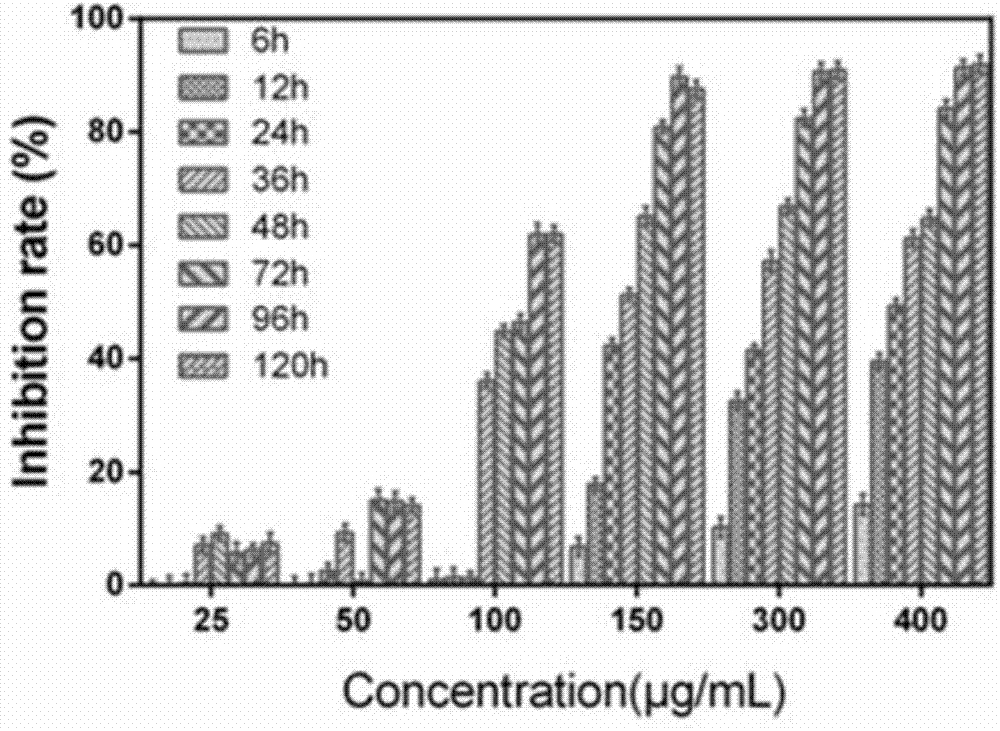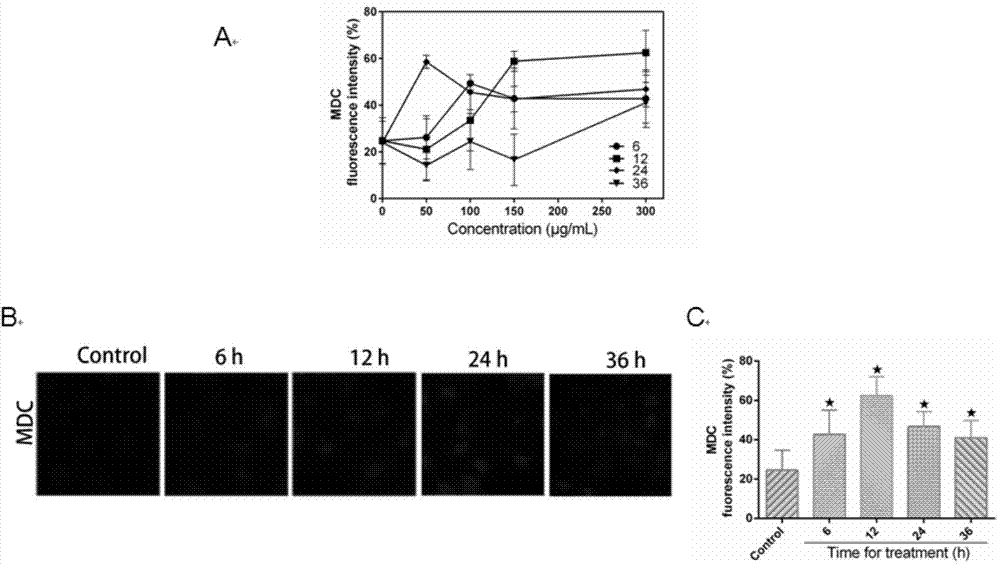Method for analysis of proanthocyanidins induced liver cancer cell autophagic death and application
A technology of proanthocyanidins and liver cancer cells, applied in the field of medicine, can solve problems such as proanthocyanidins in chestnut that are not involved
- Summary
- Abstract
- Description
- Claims
- Application Information
AI Technical Summary
Problems solved by technology
Method used
Image
Examples
Embodiment 1
[0046] Example 1 Proanthocyanidins induce autophagic death of human liver cancer HepG2 cells based on reactive oxygen species pathway
[0047] 1 Experimental materials
[0048] 1.1 Test sample
[0049] Crush the chestnut shell, add 0.05‰~0.1‰ sodium bisulfite, seal and extract in boiling water for 0.3-1h, filter the extract with a 200-mesh sieve, and flow the filtrate through the pre-treated macroporous adsorption resin AB- 8 columns, after absorbing non-adsorbed impurities with deionized water, elute the resin column with 70% ethanol to obtain the ethanol eluate, recover the ethanol under reduced pressure below 45°C, and use freeze-drying or spray-drying to obtain light brown chestnut shell proanthocyanidins (procyanidins from chestnut shell, CSPCs). During the experiment, the complete medium was used to prepare the required concentration, and it was prepared for use now.
[0050] 1.2 Human liver cancer HepG2 cells
[0051] Bought from the Institute of Biochemistry and Ce...
PUM
 Login to View More
Login to View More Abstract
Description
Claims
Application Information
 Login to View More
Login to View More - R&D
- Intellectual Property
- Life Sciences
- Materials
- Tech Scout
- Unparalleled Data Quality
- Higher Quality Content
- 60% Fewer Hallucinations
Browse by: Latest US Patents, China's latest patents, Technical Efficacy Thesaurus, Application Domain, Technology Topic, Popular Technical Reports.
© 2025 PatSnap. All rights reserved.Legal|Privacy policy|Modern Slavery Act Transparency Statement|Sitemap|About US| Contact US: help@patsnap.com



